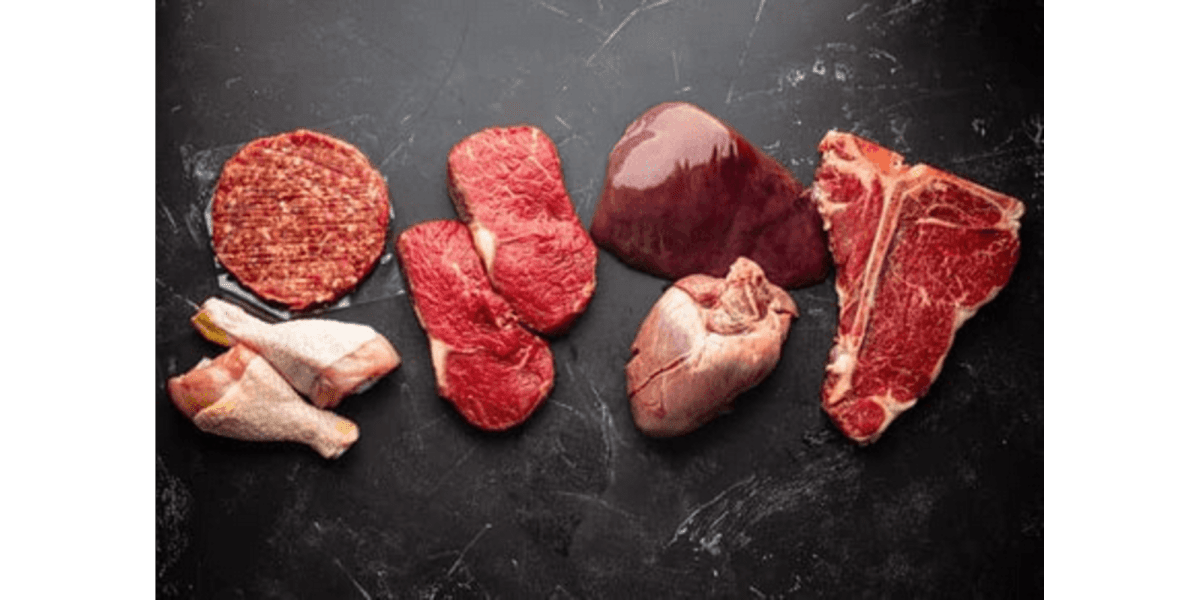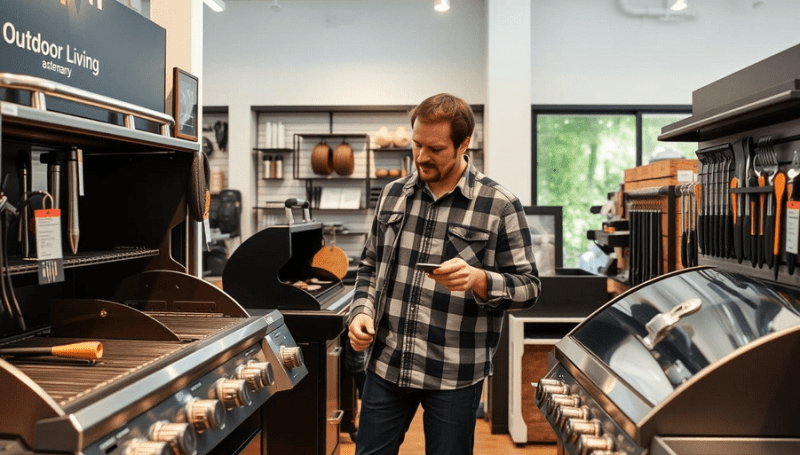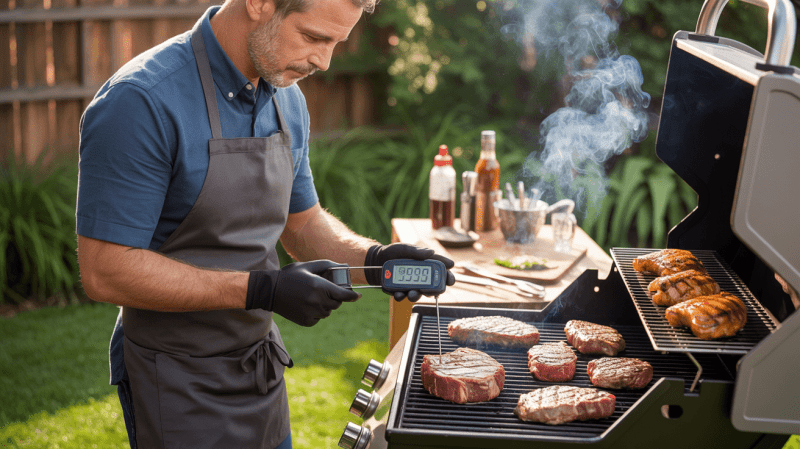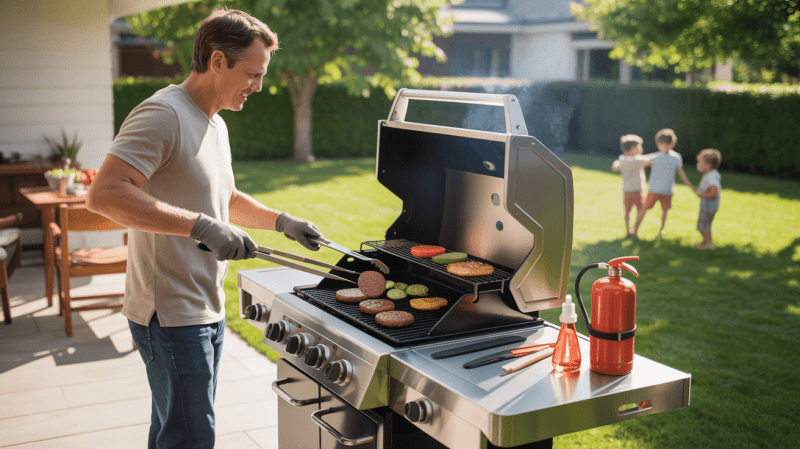Buying steak can be an expensive affair, but it doesn't have to break the bank. I've discovered some great ways to enjoy this delicious treat without overspending.
One easy tip is to buy in bulk or choose family packs, which usually offer a better price per pound.

Sometimes, choosing different cuts can also lead to big savings. For example, some lesser-known but equally tasty cuts often cost less.
To make these cuts shine, try enhancing them with sauces, butters, or marinades which add flavor without a hefty price tag.
Tracking prices and specials at different stores can make your wallet happy too. By knowing the usual price range, you can jump on deals and stock up when prices drop.
Key Takeaways
- Choose bulk buys or family packs to save more.
- Explore lesser-known cuts for better value.
- Track prices to catch deals and stock up.
Understanding Meat Quality and Cuts
When buying steak, learning about different cuts and what to look for in meat can help you get the most value for your money. Here are some tips to help you choose steaks based on quality and cut.
Beef Tenderloin and Marbling
Beef tenderloin is known for its tenderness. It's a popular choice for special occasions. One of the key things to consider is marbling, which refers to the tiny lines of fat within the meat.
Marbling improves the flavor and juiciness of the steak.
I love checking for good marbling when buying beef tenderloin. The more marbled the meat, the better it tastes. New York strip is another marbled cut with a balanced flavor and texture. It can be more budget-friendly compared to tenderloin while still providing a great taste.
Brisket and Budget-Friendly Options
Brisket is a tough cut of meat but can be quite budget-friendly. It's perfect when cooked slowly to break down the fibers and become tender. For those looking to save money, brisket is a great option.
A brisket has a fat cap that adds flavor during cooking.
I always try to get brisket if I'm planning to cook for a long duration, like during a barbecue. Another affordable option is chuck roast, which can be used in various recipes. Slow cooking helps turn these cuts into delicious meals without breaking the bank.
Boneless Cuts and Their Benefits
Boneless cuts, like boneless ribeye or sirloin, are convenient because they're easy to cook and serve. Boneless cuts allow for more of the actual meat without dealing with bones. This can be useful in certain recipes or when serving large groups.
Without the bone, I find boneless steaks quicker to prepare and eat.
These cuts often have less waste and are easier to portion, making them practical for both weeknight dinners and large gatherings. When selecting boneless cuts, looking for some marbling can enhance flavor, so consider this when choosing your steak.
Smart Shopping Strategies for Steak

I love finding good deals on steak without giving up quality. There are a couple of ways that make a big difference. One of my favorites is buying in bulk for cost savings. Checking out sales and seasonal discounts is another strategy that can cut down on costs.
Buying in Bulk at Wholesale Retailers
I've found that buying steak in bulk can really cut down my grocery bill. Stores like Costco offer large packages of steak that are perfect for stocking up. Splitting the cost between family or friends can make it even cheaper.
I like to buy a big "primal cut," which is less expensive per pound, then slice it into individual steaks at home.
Bulk buying helps me save money, but it also means some planning. I usually freeze what I don't plan to use right away. This keeps the steak fresh and lets me enjoy quality meat over time. Even ground beef can be bought in bulk, perfect for various meals if I'm not set on having steak every night.
Identifying Sales and Seasonal Discounts
When it comes to buying steak, timing is everything. I always keep an eye on store flyers and apps for sales events.
Many stores have regular discounts on meat, especially during holiday weekends. Seasonal sales often happen in the summer, around barbecue time.
Besides printed flyers, I also check online marketplaces for promotions. This includes apps and websites where I can compare prices from different retailers, saving fuel and time.
Spotting these deals isn't just good for saving money; it also lets me try different steak cuts I might not have bought at full price.
Preserving and Extending Meat Freshness

I take preserving and extending the freshness of meat seriously, especially when it comes to steak. This involves using methods like plastic wrap and vacuum sealers, as well as freezing meat properly to help it stay fresh longer and reduce waste.
Proper Use of Plastic Wrap and Vacuum Sealers
When I'm storing steak, I find that wrapping it tightly in plastic wrap can make a big difference.
It helps seal out air, which reduces the risk of freezer burn and keeps the meat from drying out. I always press the wrap closely against the surface of the steak to minimize air pockets.
Another effective method I use is a vacuum sealer.
By removing air completely, vacuum sealing creates a tight seal around the meat which helps in keeping it fresh for a longer period.
The vacuum sealer is particularly useful for larger quantities, where it extends freshness by weeks or even months compared to ordinary storage methods.
The Benefits of Freezing Meat
Freezing steak is one of the surest ways to extend its shelf life considerably. I try to freeze my steak as soon as possible after purchase to lock in its freshness.
I make sure to set my freezer to 0 degrees Fahrenheit or lower to maintain the quality of the meat.
I use detailed labeling for each package, noting the date of freezing. This helps me keep track of how long the meat has been stored, preventing me from accidentally cooking steak that’s less fresh.
Freezing does not just extend the life of the steak, but if done correctly, it also helps in preserving the flavors and tenderness.
Incorporating Meat Alternatives and Add-Ons

Incorporating alternatives and add-ons can stretch your steak budget further. You can try meatless meals and pair steaks with tasty sides for a hearty and fulfilling experience.
Integrating Meatless Meals Into Your Diet
I’ve found adding meatless meals into my week really helps save money, even if I love a good steak. It’s all about balance.
By adding meals with lentils, beans, or chickpeas, I can enjoy delicious proteins without always turning to meat.
Sometimes, I make a hearty chili with beans or whip up a tasty stir-fry with tofu. These options often cut my grocery costs significantly.
Meanwhile, varieties like veggie burgers or mushroom-based dishes are both satisfying and meat-free. It's great because I don’t even miss the meat with these flavors.
Complementing Steak with Vegetables and Sides
When I cook steak, adding vegetables and sides makes the meal more filling.
I often grill veggies like bell peppers, zucchini, and onions alongside my steak. Their charred flavors pair well and are a treat, turning a simple steak into a feast.
I also love pairing my steak with a fresh salad or roasted potatoes. Sometimes, I make a creamy mushroom sauce to top the steak without spending much more.
By rounding out the meal this way, I find that I need less meat to satisfy everyone, making it easier on my wallet.
Frequently Asked Questions
I know steak can be pricey, but with the right strategies, it's possible to enjoy it without breaking the bank. Let's dive into some common questions about saving money on steak.
How can I save money when purchasing steak from a grocery store?
I recommend looking for sales or discounts. Often, stores mark down meat that is close to its expiration date. Buying steak during a sale or using coupons can significantly cut costs.
What are cost-effective cuts of meat that can be used to prepare steak at home?
Some affordable cuts I find include flank, skirt, and chuck steak. They are flavorful and can be tenderized with marinades or slow cooking methods to make them delicious.
What tips can you offer for buying steak in bulk to get the best value?
When buying in bulk, I always check the price per pound to ensure I'm getting a good deal. Storing steak properly by freezing it can also help in saving money over time.
Is it more economical to buy meat from a butcher compared to a supermarket?
In my experience, butchers often offer fresher cuts and may have better prices for specific requests. Plus, they can give advice on inexpensive and tasty cuts.
How long can I store steak in the refrigerator before it spoils?
I try to use fresh steak within 3-5 days. If I'm not planning on cooking it soon, freezing is a great option to keep it fresh longer.
Can I save money by cutting steak myself, and if so, what should I consider?
Yes, buying larger cuts and portioning them at home can be cheaper. I always make sure to have a sharp knife. I also understand how to cut steaks properly to avoid waste.
DISCLAIMER
This document is provided for general information purposes only and should not be relied upon as providing legal advice, technical, or specific operational guidance to the reader, whether as to the practices described in the document or the applicable legal requirements and regulations.{ backyardgrilling.com} expressly disclaims any responsibility for liability arising from or related to the use or misuse of any information in this document.



